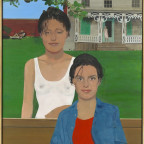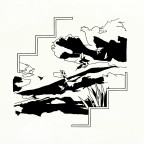Biography
For Frieze Masters this year, Waddington Custot presents a curated booth of painting and sculpture, looking at the enduring impact of various London art schools from the 1960s onward.
In the second half of the twentieth century, the influence of the London art schools on the development of British art was significant. The exhibition looks at several key establishments: the Royal College of Art, St Martin’s, the Slade, Chelsea College of Art and Goldsmiths College, where the very definition of art was probed and the classifications of disciplines exploded, as a new and experimental approach to painting and sculpture emerged in Britain and internationally.
Whereas elsewhere in Europe, on the continent, café culture and the ‘salon’ went some way to define the social activity of intellectual artist circles, in the UK it was the art school, and, perhaps, evenings in the pub after class, which served as the bedrock of artistic exchange. Importantly, the influence of these institutions did not end at graduation; a large number of artists then, as now, returned to the art school to support their practice with parallel careers in teaching. This had enormous value, not only for the artists in giving back to the system that had nurtured them, but also in maintaining a network with the next generation of artists, to exchange and forge new ideas.
Taking as a starting point the leading British artists with whom the gallery has worked over the past 50 years, the Waddington Custot booth brings together painting and sculpture by David Annesley, Peter Blake, Anthony Caro, Patrick Caulfield, Michael Craig-Martin, Ian Davenport, Barry Flanagan, Elisabeth Frink, Patrick Heron, David Hockney, John Hoyland, Allen Jones, Michael Landy, Kim Lim, Lisa Milroy, Fiona Rae, Bridget Riley, Joe Tilson and Bill Woodrow, among others. Bringing these artists together, the booth presentation explores their peer-to-peer academic relationships, and the institutions that connected them.
The Royal College of Art was at a peak of esteem in the late 1950s and early 1960s with a generation of artists who would go on to define British Pop Art: Peter Blake, Joe Tilson, David Hockney, and Allen Jones among others. Bridget Riley, a contemporary of the group, would go on to be a definitive proponent of so-called Op-Art. Patrick Caulfield, who was in the year below Hockney at the RCA, returned to the College after graduating to teach, there developing the highly recognisable painting style he would employ throughout his career.
Other artists who rose to prominence in the 1960s include students of Frank Martin and Anthony Caro, two highly influential teachers who overhauled the sculpture department in St Martins over 50 years between them, where they encouraged a generation of artists – from David Annesley to the more conceptual and divergent Barry Flanagan – to question the very nature of sculpture and to test its limits. Bill Woodrow, who belonged to the subsequent generation at St Martins, created conceptual, humorous, unwieldy, and irreverent work directly in response to, and rejection of, some of Caro’s teaching and influence.
The exhibition also includes Goldsmiths College students of the 1980s and 1990s such as Ian Davenport, Lisa Milroy, Michael Landy and Fiona Rae, together with work by their influential teacher Michael Craig-Martin. In the 1980s, the fine art department of Goldsmiths College, in the New Cross district of south east London, became enormously influential particularly due to the teachings of Craig-Martin, and ‘The Goldsmiths effect’ emerged as a perceived phenomenon, relating to the kudos of having studied at Goldsmiths College, and the edge it offered to perceived status as an artist in London.
The presentation will include a 35mm carousel slideshow of archive materials such as the artists’ original correspondence dating back to the 1960s and 1970s, archive photography, and press releases and artist-designed exhibition announcement cards, alongside a select library of catalogues for Frieze visitors to peruse.
Read more








